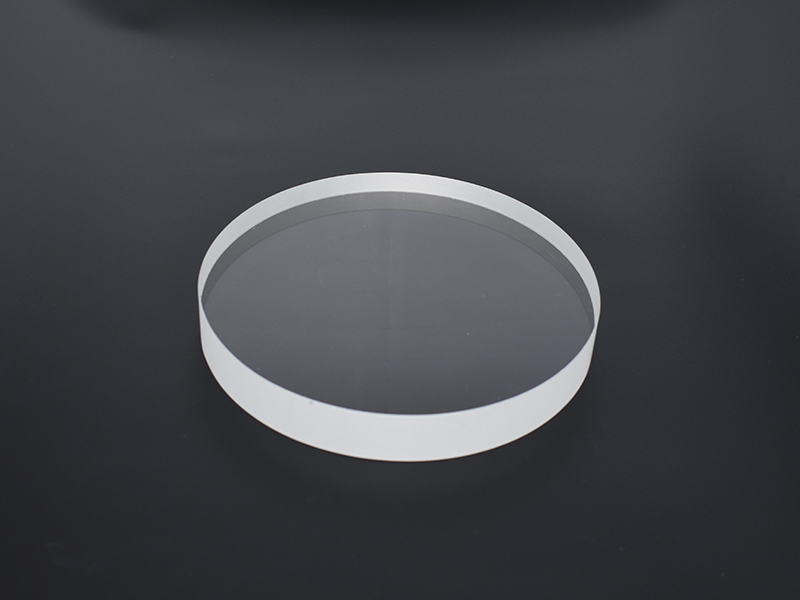Thermal Stability of Peephole Glass
Click:
-Time:2022-05-25 15:38
Peephole glass is an observation port glass that is often used in high temperature places (such as boilers, reactors, electric power, and steel mills). The thermal stability of peephole glass has a significant impact on production.

The thermal stability of peephole glass refers to its ability to withstand sudden temperature changes without damage, usually expressed in terms of temperature, which is a comprehensive performance of a series of physical properties. Rapid cooling of glass is more susceptible to damage than rapid heating. This is determined by the nature of the stress that occurs in the glass under thermal shock. Usually the glass is sufficiently resistant to compression, so the glass surface is subjected to compressive stress as the temperature rises. , which is not sensitive to temperature changes; but the situation is the opposite during rapid cooling. At this time, the surface is subjected to tensile stress, and glass is sensitive to tensile stress, and the compressive strength of glass is more than ten times greater than the tensile strength. Therefore, glass It is much stronger to be exposed to heat than to be exposed to cold. The thermal stability of the peephole glass is an important quality index.
The expansion coefficient of the glass is of decisive significance to the thermal stability of the glass. The smaller the thermal expansion coefficient, the better the thermal stability and the greater the temperature difference that the product can withstand. . For example, the expansion coefficient of high-purity silica glass is very small (5.3-5.8*10-7/℃), so it has excellent thermal stability and can withstand temperature differences as high as about 1100℃. The thermal stability of the peephole glass can withstand 200°C, 300°C, 750°C, and 1100°C according to different materials, that is, different expansion coefficients. The high temperature quickly put into 20 ℃ water glass will not burst.
If you are interested in the or need to consult, please call us +8613343800331.Pan Chao special industrial glass, Customize your persoalised glass products.
Welcome sending your inquiry: Phone :+8613343800331 Email: sales@panchaoglass.com

The thermal stability of peephole glass refers to its ability to withstand sudden temperature changes without damage, usually expressed in terms of temperature, which is a comprehensive performance of a series of physical properties. Rapid cooling of glass is more susceptible to damage than rapid heating. This is determined by the nature of the stress that occurs in the glass under thermal shock. Usually the glass is sufficiently resistant to compression, so the glass surface is subjected to compressive stress as the temperature rises. , which is not sensitive to temperature changes; but the situation is the opposite during rapid cooling. At this time, the surface is subjected to tensile stress, and glass is sensitive to tensile stress, and the compressive strength of glass is more than ten times greater than the tensile strength. Therefore, glass It is much stronger to be exposed to heat than to be exposed to cold. The thermal stability of the peephole glass is an important quality index.
The expansion coefficient of the glass is of decisive significance to the thermal stability of the glass. The smaller the thermal expansion coefficient, the better the thermal stability and the greater the temperature difference that the product can withstand. . For example, the expansion coefficient of high-purity silica glass is very small (5.3-5.8*10-7/℃), so it has excellent thermal stability and can withstand temperature differences as high as about 1100℃. The thermal stability of the peephole glass can withstand 200°C, 300°C, 750°C, and 1100°C according to different materials, that is, different expansion coefficients. The high temperature quickly put into 20 ℃ water glass will not burst.
If you are interested in the or need to consult, please call us +8613343800331.Pan Chao special industrial glass, Customize your persoalised glass products.
Welcome sending your inquiry: Phone :+8613343800331 Email: sales@panchaoglass.com
Related articles
- Types and Selection Precautions of High Temperature Glass for
- How to Choose High Pressure Resistant Glass
- Application of High Temperature Resistant Glass
- Advantages of toughened borosilicate glass
Recommend
- Classification and Properties of Heat Resistant Glass Sheets
- Thermal Stability of Peephole Glass
- Characteristics of Tempered Glass and Semi Tempered Glass
- Types and Selection Precautions of High Temperature Glass for
- How to Choose High Pressure Resistant Glass
- Application of High Temperature Resistant Glass
- Common Sense Knowledge of Toughened Borosilicate Mirror
- Advantages of toughened borosilicate glass
- Thermal Properties and Types of High Temperature Resistant Gl
- Application of flange mirror glass
Rank
- Application of high temperature resistant glass
- Precautions in the process of quartz tube cutting and picklin
- ultra-thick tempered sight glass for submarine
- What are the advantages and disadvantages of quartz tube heat
- The process of toughening of borosilicate tempered sight glas
- Where is high pressure resistant glass used?
- Introduction of elliptical quartz tube and oval quartz tube
- Introduction to the Characteristics of Quartz Glass Tube 1
- High temperature boiler sight glass for boiler
- Introduction to cold working process of quartz glass
Latest articles
- Classification and Properties of Heat Resistant Glass Sheets
- Thermal Stability of Peephole Glass
- Characteristics of Tempered Glass and Semi Tempered Glass
- Types and Selection Precautions of High Temperature Glass for
- How to Choose High Pressure Resistant Glass
- Application of High Temperature Resistant Glass
- Common Sense Knowledge of Toughened Borosilicate Mirror
- Advantages of toughened borosilicate glass
- Thermal Properties and Types of High Temperature Resistant Gl
- Application of flange mirror glass

